#photography production sydney
Explore tagged Tumblr posts
Text
Capturing Moments, Creating Memories: Photography Production in Sydney
Discover the artistry of photography production in Sydney with Sensor Studios. Our experienced team specializes in capturing the essence of every moment, from corporate events to personal milestones. With a keen eye for detail and a passion for storytelling, we turn ordinary moments into extraordinary memories. Elevate your visual content with our professional photography services and let us bring your vision to life. https://sensorstudios.com.au/contact/

0 notes
Text

Construction photography focuses on capturing images of construction sites, showcasing the various stages of a building's development. It serves as a valuable tool for project documentation, progress tracking, and marketing purposes. Skilled construction photographers use their expertise to highlight the architectural details, machinery, and the dynamic nature of the construction process.
#time lapse photography australia#time lapse photography sydney#timelapse video production#construction photography#construction photography sydney
0 notes
Text

Elevate your brand with the best lifestyle product renders, which show your products in real-life settings that appeal to customers. These high-quality, visually appealing renderings emphasize functionality and style, leaving a lasting impression. Lifestyle product renders are ideal for marketing, social media, and e-commerce. They increase engagement and drive brand success. Visit us now to know more about the best lifestyle product renders.
#beautiful photos#photography#product photography#wildlife photos#Best Lifestyle Product Renders#Best Lifestyle Product Renders in Australia#Best Lifestyle Product Renders in sydney#nature photography#lifestyle product renders#photoshoot
0 notes
Text
Floor Plan

Are you selling a property in Sydney? Floor plans are a great way to give potential buyers a clear and concise overview of the layout of your property. Upload Media Service can help you create high-quality floor plans that will help you sell your property faster.
Our floor plans are accurate, detailed, and easy to understand. We use state-of-the-art equipment to ensure that your floor plans are of the highest quality. We also offer a variety of customization options, so you can create floor plans that perfectly match your property.
So what are you waiting for?
Contact Upload Media Services today and let us help you create visuals that will wow your clients!
Upload Media Services Offers:-
For more info, contact us at:-
#Are you selling a property in Sydney? Floor plans are a great way to give potential buyers a clear and concise overview of the layout of you#Our floor plans are accurate#detailed#and easy to understand. We use state-of-the-art equipment to ensure that your floor plans are of the highest quality. We also offer a varie#so you can create floor plans that perfectly match your property.#So what are you waiting for?#Contact Upload Media Services today and let us help you create visuals that will wow your clients!#Upload Media Services Offers:-#✅ Medical and Healthcare Video Production#✅ Professional Animations#✅ Corporate / Real estate / Commercial video#✅ Events Videography#✅ Interviews and Testimonials Videos#✅ Product Promotional Videos#✅ Profile / Agent Videos#✅ Real Estate Photography & Videography#✅ Training Videos#✅ Social media content#✅ Stills Photography / Headshots / Corporate Portraits#For more info#contact us at:-⠀#📧 Email: [email protected]#📱 Mobile:0401957996#📲 Landline:0287409828#dronephotography#aerialshots#aerialphotography#realestatephotography#businessphotography#businessvideography
0 notes
Text
What are the considerations for ecommerce photography in Sydney?

Introduction
Ecommerce photography is the process of taking high-quality photos of products for online stores. These photos are used to sell products to customers who cannot see them in person.
Benefits of Ecommerce Photography
There are many benefits to ecommerce photography, including:
· Increased sales: Studies have shown that ecommerce stores with high-quality product photos generate more sales than those with low-quality photos.
· Improved customer experience: Well-lit, clear product photos help customers to see what they are buying, which can lead to a better shopping experience.
· Increased brand awareness: Professional product photos can help to build brand awareness and create a positive impression of your store.
How to Take Great Ecommerce Photos
Here are some tips for taking great ecommerce photos:
· Use a good camera: A high-quality camera will produce better photos than a smartphone camera.
· Use good lighting: Proper lighting is essential for taking great product photos. Natural light is best, but you can also use artificial lights.
· Set up your shot: Take the time to set up your shot before you start taking photos. This will help you to get the best possible results.
· Use a tripod: A tripod will help to keep your camera steady, which will result in sharper photos.
· Edit your photos: Once you have taken your photos, you can edit them to improve their appearance. There are many photo editing software programs available, such as Adobe Photoshop and GIMP.
Where to Find Ecommerce Photography Services
If you do not want to take your own ecommerce photos, you can hire a professional photographer. There are many photographers who specialize in ecommerce photography in Sydney. You can find them by searching online or asking for recommendations from friends or colleagues.
Conclusion
Ecommerce photography is an important part of any online store. By taking high-quality product photos, you can increase sales, improve the customer experience, and build brand awareness.
Here are some additional tips for taking great ecommerce photos:
· Showcase your products from different angles: This will help customers to get a better idea of what they are buying.
· Use props and backgrounds to create a visually appealing shot: This will help your products to stand out.
· Keep your photos consistent: Use the same style and format for all of your product photos. This will create a more professional look for your store.
· Label your photos with relevant keywords: This will help customers to find your products when they are searching online.
By following these tips, you can take great ecommerce photos that will help you to sell more products.
0 notes
Text
Fujifilm House of Photography: Discover Fujifilm Video workshop, Fujifilm House of Photography, Saturday 25th March 2023, 11:00 am – 1:00 pm AEDT – Commentary
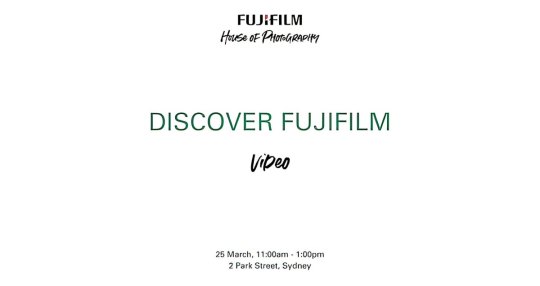
View On WordPress
#APS-C#cinematographers#cinematography#filmmaking#Fujifilm Australia#Fujifilm House of Photography#Fujifilm X-H2#Fujifilm X-H2S#moviemaking#Super 35#Sydney#video production#videographers#videography
0 notes
Text
Types of digital content for content marketing
Digital marketing and content creation is the oldest and best-known of the digital marketing techniques. It's been around for almost as long as internet service providers (ISPs). In fact, it's so old that its original predecessor was called "digital advertising." To explore the variety of ways you can integrate digital content into your marketing strategy, check out these 5 different types of digital content.
Content Marketing Is Dead
By the end of the 20th century, internet marketing was virtually dead in the news. However, the rise of social media and mobile phones in the 21st century sparked a fresh interest in digital marketing. In order to make the most of these trends, some content marketers have begun to look back at their digital marketing strategies and try to incorporate elements that may have been lacking back in the day. As a result, the number of options available in the digital marketing landscape has grown exponentially over the past few years.
Online Course Development
Online teaching is the method most people are using to learn new skills. It's also the method most people are trying to incorporate into their digital marketing strategy. You can find thousands of websites teaching various skills in this modern learning environment. A few of the most common topics include web design, digital marketing, and social media marketing. Also, you may find thousands of online courses that focus on specific topics. If you're looking for a course that's specific to your business, or even more specific, consider turning to the internet's largest, most comprehensive course catalog.
Internet marketing
The internet has been a key source of information for mankind since it was first created as a communication platform. It's also what makes the internet marketing approach possible. The internet has created an environment where almost any topic and product could be implemented into an email or blog post. This has made internet marketing appealing to both business and individuals. For example, you can use the Internet's wide array of education websites to teach people how to operate your business. You can also use the internet to bring thousands of books and videos to life, complete with colorful images, sound, and easy-to-navigate online content.
Paid Advertising
Paid advertising is when an advertiser pays for exposure and thus a Individual is depicted in an advert as one who may or may not be interested in their product. Examples of paid ads include television, radio, and online ads. Paid advertising can be good strategies for businesses that can't go without ad spend, but it can also be a poor choice for those who want to create original content or seek out brand new products. Paid advertising is the oldest of the digital marketing techniques, having been around since the days of radio and television. However, the number of ways you can reach out to your potential customers and make them aware of your products and services has grown exponentially during the past couple of years. There are many different types of paid advertising, with many companies now focusing more on targeting specific segments of their customers
Content Writing
A content marketing approach starts by writing about your business and why you believe you're the perfect person to write about it. A great example of this is this year's presidential election, where so many topics were discussed and written about—from the debates to the candidates' supporters. This makes content marketing a great fit for candidates and their supporters. Additionally, there are many different types of content marketing, such as press releases and blog posts. While these are typically focused on news and current events, they can be used to reflect more challenging topics, like culture or social justice issues
Digital Contracts
Digital contracts, on the other hand, are deals between an individual and an entity. These types of contracts are typically between an individual and a company. These types of contracts are often self-service contracts, meaning the individual holds all the benefits (such as discussing the products or services of the company in-depth or making announcements about their business). These types of contracts can provide more value to the individual owner than a traditional, face-to-face meeting. For example, you can have an individual meet with you in-person and discuss their finance plan with you. Alternatively, you can have an online meeting with the individual, followed by a phone interview. These types of digital contracts are often more expensive but provide more value for the recipient
Digital Ads
Digital ads are advertisements on digital platforms such as Facebook and Instagram that urge people to "like" the advertiser's page. Digital ads often accompany a pop-up that exclaims, "You've gots to be talking to us!" Beyond the obvious benefits of talking to people directly about your business—and the chance to meet potential customers in person—advertisements on digital platforms offer a wide range of other benefits. For one, the ads encourage the viewer to "like" the advertiser's page, which can earn you more Backlinks from other digital platforms.
Conclusion
Digital marketing is a great way to generate additional income for your business, but you'll need to be careful about using no longer available techniques Digital marketing offers numerous options, and it's important to keep an eye on the competition to stay relevant. When you look back at the digital marketing landscape, you'll see that there are many different types of digital marketing. It's important to choose the right approach for your business, and learn as much as possible about digital marketing so you can make the best digital marketing strategy for your business. it is advisable to look for digital content creation agency. In Sydney for best deal s and great service. Reach out to Vulb Media experts we can help to get the best Product Photographer in Sydney, Content Creator in Sydney and professional digital marketers in Sydney.
#content creation#product photography#content creator#digital content#content creation agency#Photographer Sydney#content marketing#digital#content#vuldb media
0 notes
Text


@vogueaustralia : Zendaya is our May cover star. The 27-year-old needs little introduction, she is one of the biggest stars in the world right now. Fresh off the Met Gala red carpet and press tour for #LucaGuadagnino’s steamy new film, #Challengers, where she plays the inimitable Tashi Duncan, there is no mistaking Zendaya’s star power. “What is amazing about Zendaya is, she is someone who really defines her generation, which is extremely rare,” enthuses Jonathan Anderson, creative director of Loewe and the costume designer for Challengers. “And yet there has never been someone so humble.” Sydney was the first stop for the #Challengers premiere, and for our May cover feature, the actor sat down with Hannah Rose to talk about the film, her pursuit in directing, and the seismic fame she is currently experiencing. Read the full interview and see the cover story at the link in our bio.
@Zendaya wears @LouisVuitton and @Bulgari. Editor-in-chief @christinecentenera, Styling by @luxurylaw, photography by @josholins, interviewed by @hannahroserose, hair by @kimblehaircare, makeup by @raoulalejandre, nails by @marisacarmichael, set design by @heathmattioli, tailoring by @matthewreisman, ep & talent direction by @rikki_keene, production by @geprojects, @triona_7
https://www.vogue.com.au/culture/welcome-to-the-year-of-zendaya/news-story/b08d6834409f6d69f958e79459f7fe76?utm_campaign=VogueAuOrganic&utm_content=www.instagram.com%2Fp%2FC62Wyc5hOC7%2F&utm_medium=postOrganic&utm_source=Instagram
32 notes
·
View notes
Text
Capture Life's Moments with Sensor Studios: Premier Photography Production in Sydney

Elevate your visual storytelling with Sensor Studios, the premier photography production studio in Sydney. Our expert team specializes in capturing life's precious moments through creative and professional lens work. From events to commercial projects, experience the art of photography that goes beyond the ordinary. https://sensorstudios.com.au/
0 notes
Text

Construction photography focuses on capturing images of construction sites, showcasing the various stages of a building's development. It serves as a valuable tool for project documentation, progress tracking, and marketing purposes. Skilled construction photographers use their expertise to highlight the architectural details, machinery, and the dynamic nature of the construction process.
#time lapse photography australia#time lapse photography sydney#timelapse video production#construction photography#construction photography sydney
0 notes
Text
Product photographer Sydney - Factors to consider while choosing

Selecting a good product photographer Sydney can make or break your business. So, always try to find a good photographer who has experience in this job. When selecting a photographer for your product photoshoot, make sure the photographer matches your vibe while expressing your brand message. Also, make sure you check their editing skills from their previous works uploaded on their social media platform and talk about your budget before signing any contract. For more details click:
https://zthinkerblog.com/factors-to-consider-while-choosing-a-product-photographer-sydney/
#Product photographer Sydney#Product photographers in Sydney#photography service#ecommerce photography#ecommerce photographers in Sydney
0 notes
Text







Joshua Yeldham, born 1970, Sydney, Australia
1989-93 Bachelor of Fine Arts, Rhode Island School of Design. USA.
Born in Sidney, Yeldham studied in the United States, where he received his Bachelor of Fine Arts from the Rhode Island School of Design. He has exhibited mostly in Australia and China and his work is a part of international private, public and corporate collections including the Australian Stock Exchange and The University of Wollongong. For one period of his life, Yeldham was a very successful filmmaker. For his film Frailejón (1993), he has won a Student Emmy Award, been nominated for a Student Oscar and been a finalist in the Wynne, Sulman and Archibald prizes. His early childhood influenced and directed the rest of his life. When he was eight, Yeldham was sent to the boarding school, far away from home, where he was confronted with everyday bullying. A small and sensitive boy was not popular among friends and teachers. But vestiges of his childhood helped him to create his own world of art. He started to live in fantasy, painting and drawing products of his imagination.
https://arthousegallery.com.au/.../144-joshua-yeldham-in.../
26 notes
·
View notes
Text
(Mostly) Lost, but Not Forgotten: Omar Khayyam (1923) / A Lover’s Oath (1925)
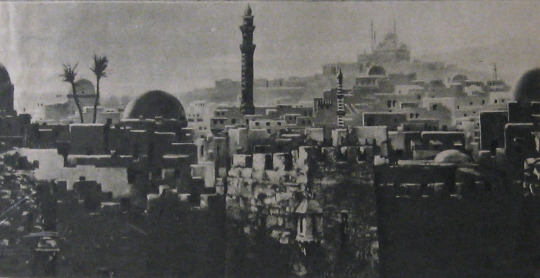

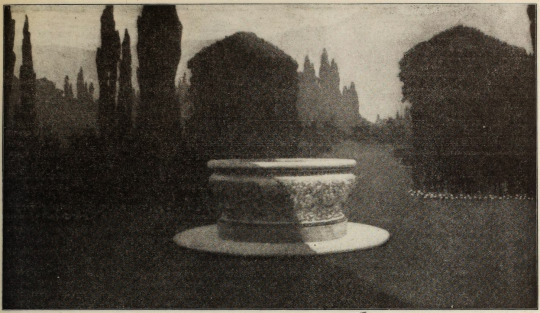
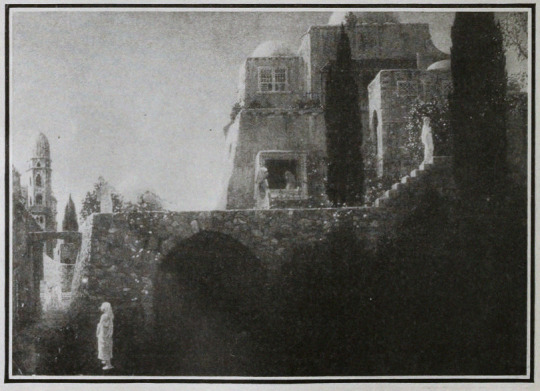
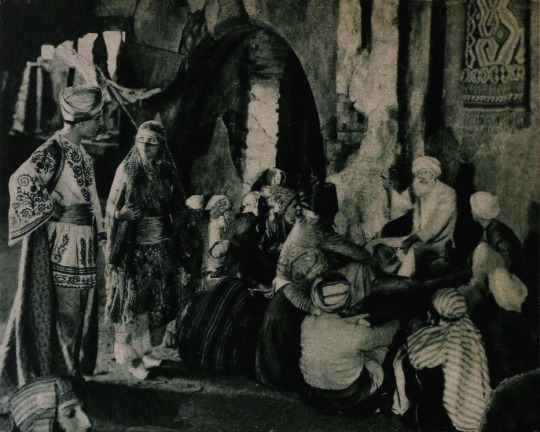
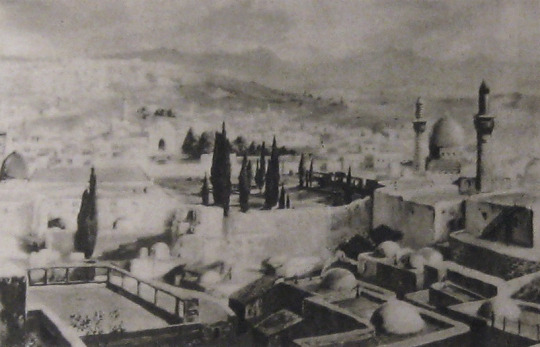
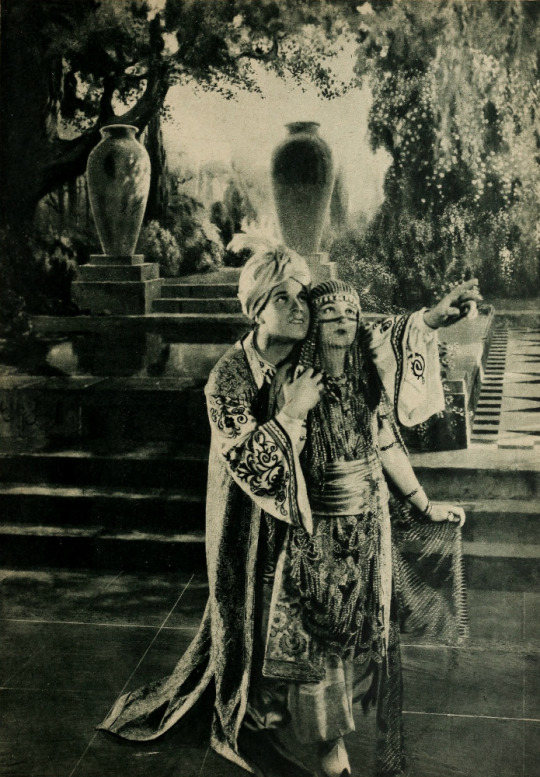
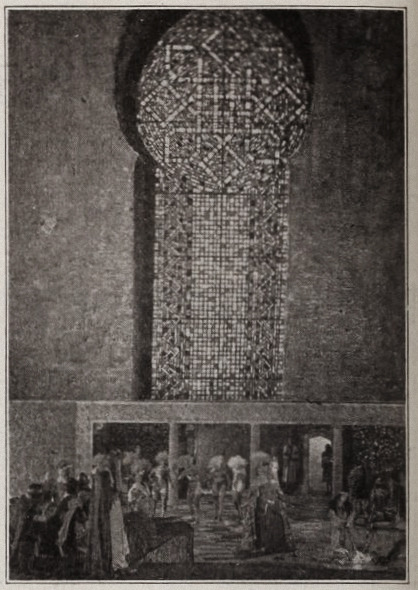
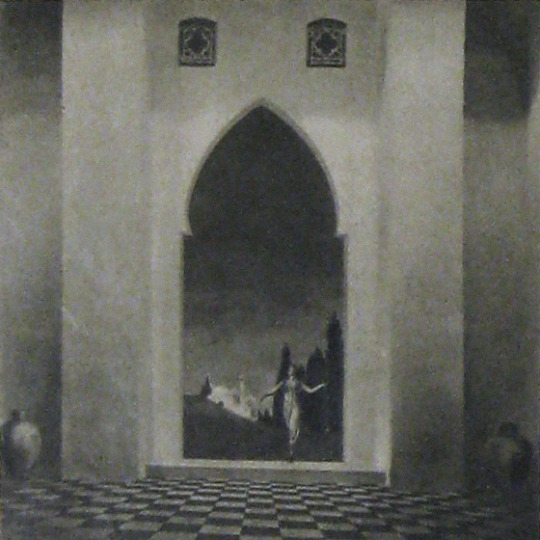
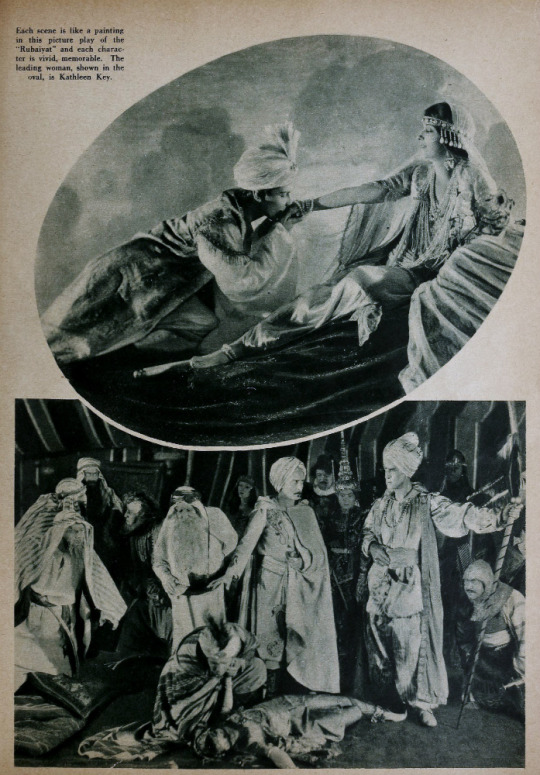



Alternate Titles: The Rubaiyat of Omar Khayyam, The Rubaiyat, Omar Khayyam, Omar
Direction: Ferdinand Pinney Earle; assisted by Walter Mayo
Scenario: Ferdinand P. Earle
Titles: Marion Ainslee, Ferdinand P. Earle (Omar), Louis Weadock (A Lover’s Oath)
Inspired by: The Rubaiyat of Omar Khayyam, as edited & translated by Edward FitzGerald
Production Manager: Winthrop Kelly
Camera: Georges Benoit
Still Photography: Edward S. Curtis
Special Photographic Effects: Ferdinand P. Earle, Gordon Bishop Pollock
Composer: Charles Wakefield Cadman
Editors: Arthur D. Ripley (The Rubaiyat of Omar Khayyam version), Ethel Davey & Ferdinand P. Earle (Omar / Omar Khayyam, the Director’s cut of 1922), Milton Sills (A Lover’s Oath)
Scenic Artists: Frank E. Berier, Xavier Muchado, Anthony Vecchio, Paul Detlefsen, Flora Smith, Jean Little Cyr, Robert Sterner, Ralph Willis
Character Designer: Louis Hels
Choreography: Ramon Novarro (credited as Ramon Samaniegos)
Technical Advisors: Prince Raphael Emmanuel, Reverend Allan Moore, Captain Dudley S. Corlette, & Captain Montlock or Mortlock
Studio: Ferdinand P. Earle Productions / The Rubaiyat, Inc. (Production) & Eastern Film Corporation (Distribution, Omar), Astor Distribution Corporation [States Rights market] (Distribution, A Lover’s Oath)
Performers: Frederick Warde, Edwin Stevens, Hedwiga Reicher, Mariska Aldrich, Paul Weigel, Robert Anderson, Arthur Carewe, Jesse Weldon, Snitz Edwards, Warren Rogers, Ramon Novarro (originally credited as Ramon Samaniegos), Big Jim Marcus, Kathleen Key, Charles A. Post, Phillippe de Lacy, Ferdinand Pinney Earle
Premiere(s): Omar cut: April 1922 The Ambassador Theatre, New York, NY (Preview Screening), 12 October 1923, Loew’s New York, New York, NY (Preview Screening), 2 February 1923, Hoyt’s Theatre, Sydney, Australia (Initial Release)
Status: Presumed lost, save for one 30 second fragment preserved by the Academy Film Archive, and a 2.5 minute fragment preserved by a private collector (Old Films & Stuff)
Length: Omar Khayyam: 8 reels , 76 minutes; A Lover’s Oath: 6 reels, 5,845 feet (though once listed with a runtime of 76 minutes, which doesn’t line up with the stated length of this cut)
Synopsis (synthesized from magazine summaries of the plot):
Omar Khayyam:
Set in 12th century Persia, the story begins with a preface in the youth of Omar Khayyam (Warde). Omar and his friends, Nizam (Weigel) and Hassan (Stevens), make a pact that whichever one of them becomes a success in life first will help out the others. In adulthood, Nizam has become a potentate and has given Omar a position so that he may continue his studies in mathematics and astronomy. Hassan, however, has grown into quite the villain. When he is expelled from the kingdom, he plots to kidnap Shireen (Key), the sheik’s daughter. Shireen is in love with Ali (Novarro). In the end it’s Hassan’s wife (Reicher) who slays the villain then kills herself.
A Lover’s Oath:
The daughter of a sheik, Shireen (Key), is in love with Ali (Novarro), the son of the ruler of a neighboring kingdom. Hassan covets Shireen and plots to kidnap her. Hassan is foiled by his wife. [The Sills’ edit places Ali and Shireen as protagonists, but there was little to no re-shooting done (absolutely none with Key or Novarro). So, most critics note how odd it is that all Ali does in the film is pitch woo, and does not save Shireen himself. This obviously wouldn’t have been an issue in the earlier cut, where Ali is a supporting character, often not even named in summaries and news items. Additional note: Post’s credit changes from “Vizier” to “Commander of the Faithful”]
Additional sequence(s) featured in the film (but I’m not sure where they fit in the continuity):
Celestial sequences featuring stars and planets moving through the cosmos
Angels spinning in a cyclone up to the heavens
A Potters’ shop sequence (relevant to a specific section of the poems)
Harem dance sequence choreographed by Novarro
Locations: palace gardens, street and marketplace scenes, ancient ruins
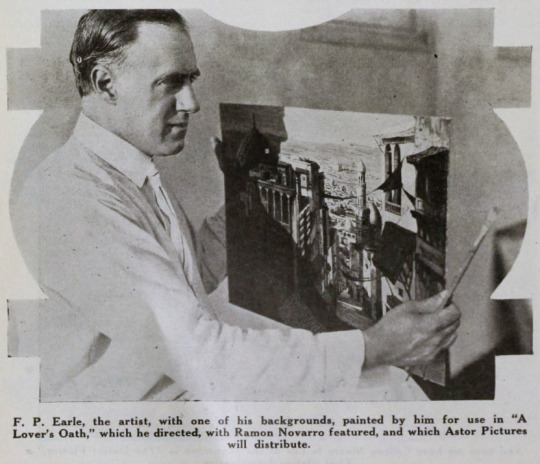

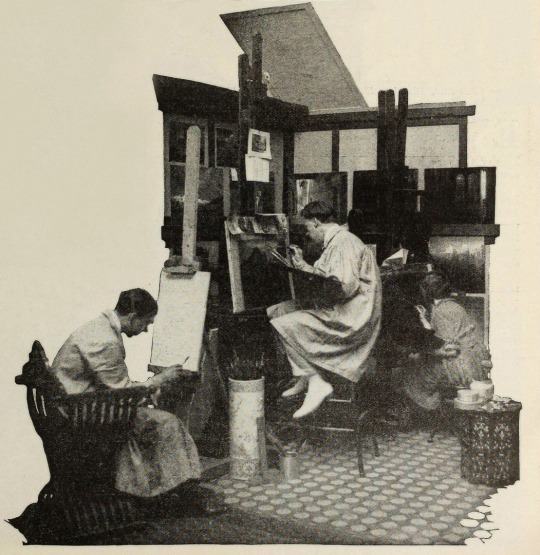
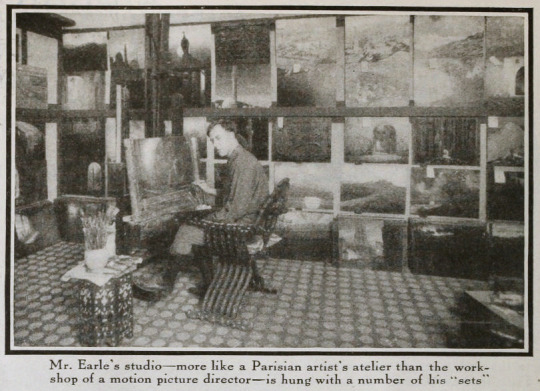
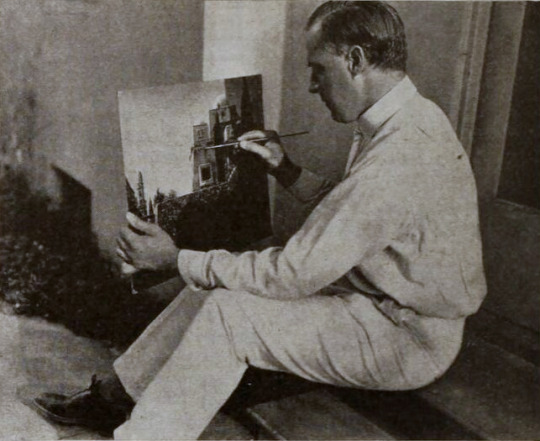
Points of Interest:
“The screen has been described as the last word in realism, but why confine it there? It can also be the last word in imaginative expression.”
Ferdinand P. Earle as quoted in Exhibitors Trade Review, 4 March 1922
The Rubaiyat of Omar Khayyam was a massive best seller. Ferdinand Pinney Earle was a classically trained artist who studied under William-Adolphe Bougueraeu and James McNeill Whistler in his youth. He also had years of experience creating art backgrounds, matte paintings, and art titles for films. Charles Wakefield Cadman was an accomplished composer of songs, operas, and operettas. Georges Benoit and Gordon Pollock were experienced photographic technicians. Edward S. Curtis was a widely renowned still photographer. Ramon Novarro was a name nobody knew yet—but they would soon enough.
When Earle chose The Rubaiyat as the source material for his directorial debut and collected such skilled collaborators, it seemed likely that the resulting film would be a landmark in the art of American cinema. Quite a few people who saw Earle’s Rubaiyat truly thought it would be:
William E. Wing writing for Camera, 9 September 1922, wrote:
“Mr. Earle…came from the world of brush and canvass, to spread his art upon the greater screen. He created a new Rubaiyat with such spiritual colors, that they swayed.” … “It has been my fortune to see some of the most wonderful sets that this Old Earth possesses, but I may truly say that none seized me more suddenly, or broke with greater, sudden inspiration upon the view and the brain, than some of Ferdinand Earle’s backgrounds, in his Rubaiyat. “His vision and inspired art seem to promise something bigger and better for the future screen.”
As quoted in an ad in Film Year Book, 1923:
“Ferdinand Earle has set a new standard of production to live up to.”
Rex Ingram
“Fifty years ahead of the time.”
Marshall Neilan
The film was also listed among Fritz Lang’s Siegfried, Chaplin’s Gold Rush, Fairbanks’ Don Q, Lon Chaney’s Phantom of the Opera and The Unholy Three, and Erich Von Stroheim’s Merry Widow by the National Board of Review as an exceptional film of 1925.
So why don’t we all know about this film? (Spoiler: it’s not just because it’s lost!)
The short answer is that multiple dubious legal challenges arose that prevented Omar’s general release in the US. The long answer follows BELOW THE JUMP!
Earle began the project in earnest in 1919. Committing The Rubaiyat to film was an ambitious undertaking for a first-time director and Earle was striking out at a time when the American film industry was developing an inferiority complex about the level of artistry in their creative output. Earle was one of a number of artists in the film colony who were going independent of the emergent studio system for greater protections of their creative freedoms.
In their adaptation of The Rubaiyat of Omar Khayyam, Earle and Co. hoped to develop new and perfect existing techniques for incorporating live-action performers with paintings and expand the idea of what could be accomplished with photographic effects in filmmaking. The Rubaiyat was an inspired choice. It’s not a narrative, but a collection of poetry. This gave Earle the opportunity to intersperse fantastical, poetic sequences throughout a story set in the lifetime of Omar Khayyam, the credited writer of the poems. In addition to the fantastic, Earle’s team would recreate 12th century Persia for the screen.
Earle was convinced that if his methods were perfected, it wouldn’t matter when or where a scene was set, it would not just be possible but practical to put on film. For The Rubaiyat, the majority of shooting was done against black velvet and various matte photography and multiple exposure techniques were employed to bring a setting 800+ years in the past and 1000s of miles removed to life before a camera in a cottage in Los Angeles.
Note: If you’d like to learn a bit more about how these effects were executed at the time, see the first installment of How’d They Do That.
Unfortunately, the few surviving minutes don’t feature much of this special photography, but what does survive looks exquisite:
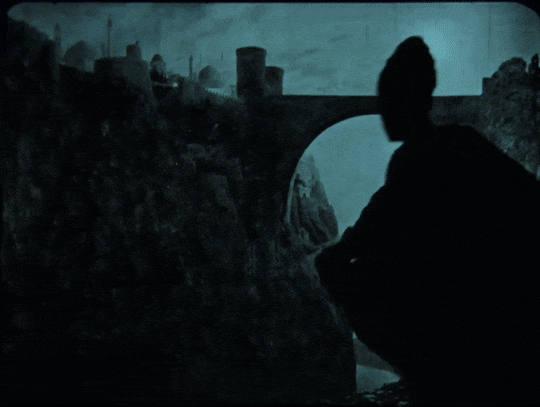
see all gifs here
Earle, knowing that traditional stills could not be taken while filming, brought in Edward S. Curtis. Curtis developed techniques in still photography to replicate the look of the photographic effects used for the film. So, even though the film hasn’t survived, we have some pretty great looking representations of some of the 1000s of missing feet of the film.
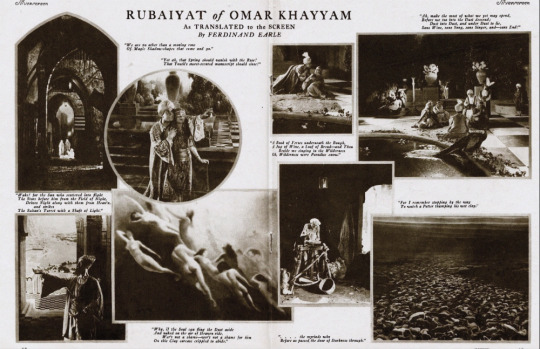
Nearly a year before Curtis joined the crew, Earle began collaboration with composer Charles Wakefield Cadman. In another bold creative move, Cadman and Earle worked closely before principal photography began so that the score could inform the construction and rhythm of the film and vice versa.
By the end of 1921 the film was complete. After roughly 9 months and the creation of over 500 paintings, The Rubaiyat was almost ready to meet its public. However, the investors in The Rubaiyat, Inc., the corporation formed by Earle to produce the film, objected to the ample reference to wine drinking (a comical objection if you’ve read the poems) and wanted the roles of the young lovers (played by as yet unknown Ramon Novarro and Kathleen Key) to be expanded. The dispute with Earle became so heated that the financiers absconded with the bulk of the film to New York. Earle filed suit against them in December to prevent them from screening their butchered and incomplete cut. Cadman supported Earle by withholding the use of his score for the film.
Later, Eastern Film Corp. brokered a settlement between the two parties, where Earle would get final cut of the film and Eastern would handle its release. Earle and Eastern agreed to change the title from The Rubaiyat of Omar Khayyam to simply Omar. Omar had its first official preview in New York City. It was tentatively announced that the film would have a wide release in the autumn.
However, before that autumn, director Norman Dawn launched a dubious patent-infringement suit against Earle and others. Dawn claimed that he owned the sole right to use multiple exposures, glass painting for single exposure, and other techniques that involved combining live action with paintings. All the cited techniques had been widespread in the film industry for a decade already and eventually and expectedly Dawn lost the suit. Despite Earle’s victory, the suit effectively put the kibosh on Omar’s release in the US.
Earle moved on to other projects that didn’t come to fruition, like a Theda Bara film and a frankly amazing sounding collaboration with Cadman to craft a silent-film opera of Faust. Omar did finally get a release, albeit only in Australia. Australian news outlets praised the film as highly as those few lucky attendees of the American preview screenings did. The narrative was described as not especially original, but that it was good enough in view of the film’s artistry and its imaginative “visual phenomena” and the precision of its technical achievement.
One reviewer for The Register, Adelaide, SA, wrote:
“It seems almost an impossibility to make a connected story out of the short verse of the Persian of old, yet the producer of this classic of the screen… has succeeded in providing an entertainment that would scarcely have been considered possible. From first to last the story grips with its very dramatic intensity.”
While Omar’s American release was still in limbo, “Ramon Samaniegos” made a huge impression in Rex Ingram’s Prisoner of Zenda (1922, extant) and Scaramouche (1923, extant) and took on a new name: Ramon Novarro. Excitement was mounting for Novarro’s next big role as the lead in the epic Ben-Hur (1925, extant) and the Omar project was re-vivified.
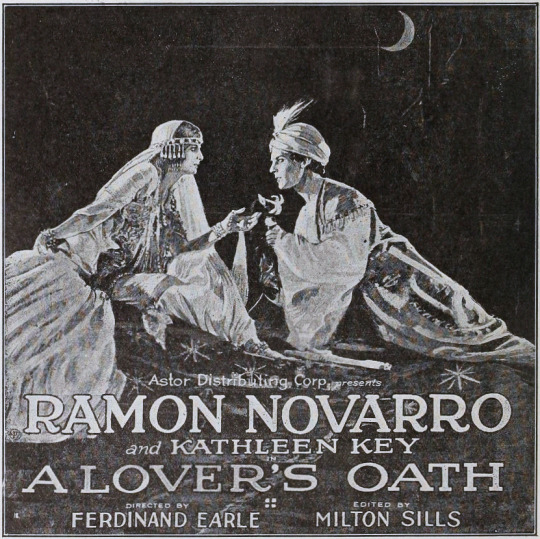
A new company, Astor Distribution Corp., was formed and purchased the distribution rights to Omar. Astor hired actor (note, not an editor) Milton Sills to re-cut the film to make Novarro and Key more prominent. The company also re-wrote the intertitles, reduced the films runtime by more than ten minutes, and renamed the film A Lover’s Oath. Earle had moved on by this point, vowing to never direct again. In fact, Earle was indirectly working with Novarro and Key again at the time, as an art director on Ben-Hur!
Despite Omar’s seemingly auspicious start in 1920, it was only released in the US on the states rights market as a cash-in on the success of one of its actors in a re-cut form five years later.
That said, A Lover’s Oath still received some good reviews from those who did manage to see it. Most of the negative criticism went to the story, intertitles, and Sills’ editing.
What kind of legacy could/should Omar have had? I’m obviously limited in my speculation by the fact that the film is lost, but there are a few key facts about the film’s production, release, and timing to consider.
The production budget was stated to be $174,735. That is equivalent to $3,246,994.83 in 2024 dollars. That is a lot of money, but since the production was years long and Omar was a period film set in a remote locale and features fantastical special effects sequences, it’s a modest budget. For contemporary perspective, Robin Hood (1922, extant) cost just under a million dollars to produce and Thief of Bagdad (1924, extant) cost over a million. For a film similarly steeped in spectacle to have nearly 1/10th of the budget is really very noteworthy. And, perhaps if the film had ever had a proper release in the US—in Earle’s intended form (that is to say, not the Sills cut)—Omar may have made as big of a splash as other epics.
It’s worth noting here however that there are a number of instances in contemporary trade and fan magazines where journalists off-handedly make this filmmaking experiment about undermining union workers. Essentially implying that that value of Earle’s method would be to continue production when unionized workers were striking. I’m sure that that would absolutely be a primary thought for studio heads, but it certainly wasn’t Earle’s motivation. Often when Earle talks about the method, he focuses on being able to film things that were previously impossible or impracticable to film. Driving down filming costs from Earle’s perspective was more about highlighting the artistry of his own specialty in lieu of other, more demanding and time-consuming approaches, like location shooting.
This divide between artists and studio decision makers is still at issue in the American film and television industry. Studio heads with billion dollar salaries constantly try to subvert unions of skilled professionals by pursuing (as yet) non-unionized labor. The technical developments of the past century have made Earle’s approach easier to implement. However, just because you don’t have to do quite as much math, or time an actor’s movements to a metronome, does not mean that filming a combination of painted/animated and live-action elements does not involve skilled labor.
VFX artists and animators are underappreciated and underpaid. In every new movie or TV show you watch there’s scads of VFX work done even in films/shows that have mundane, realistic settings. So, if you love a film or TV show, take the effort to appreciate the work of the humans who made it, even if their work was so good you didn’t notice it was done. And, if you’ve somehow read this far, and are so out of the loop about modern filmmaking, Disney’s “live-action” remakes are animated films, but they’ve just finagled ways to circumvent unions and low-key delegitimize the skilled labor of VFX artists and animators in the eyes of the viewing public. Don’t fall for it.
VFX workers in North America have a union under IATSE, but it’s still developing as a union and Marvel & Disney workers only voted to unionize in the autumn of 2023. The Animation Guild (TAG), also under the IATSE umbrella, has a longer history, but it’s been growing rapidly in the past year. A strike might be upcoming this year for TAG, so keep an eye out and remember to support striking workers and don’t cross picket lines, be they physical or digital!
Speaking of artistry over cost-cutting, I began this post with a mention that in the early 1920s, the American film industry was developing an inferiority complex in regard to its own artistry. This was in comparison to the European industries, Germany’s being the largest at the time. It’s frustrating to look back at this period and see acceptance of the opinion that American filmmakers weren’t bringing art to film. While yes, the emergent studio system was highly capitalistic and commercial, that does not mean the American industry was devoid of home-grown artists.
United Artists was formed in 1919 by Douglas Fairbanks, Charlie Chaplin, Mary Pickford, and D.W. Griffith precisely because studios were holding them back from investing in their art—within the same year that Earle began his Omar project. While salaries and unforgiving production schedules were also paramount concerns in the filmmakers going independent, a primary impetus was that production/distribution heads exhibited too much control over what the artists were trying to create.
Fairbanks was quickly expanding his repertoire in a more classical and fantastic direction. Cecil B. DeMille made his first in a long and very successful string of ancient epics. And the foreign-born children of the American film industry, Charlie Chaplin, Rex Ingram, and Nazimova, were poppin’ off! Chaplin was redefining comedic filmmaking. Ingram was redefining epics. Nazimova independently produced what is often regarded as America’s first art film, Salome (1923, extant), a film designed by Natacha Rambova, who was *gasp* American. Earle and his brother, William, had ambitious artistic visions of what could be done in the American industry and they also had to self-produce to get their work done.
Meanwhile, studio heads, instead of investing in the artists they already had contracts with, tried to poach talent from Europe with mixed success (in this period, see: Ernst Lubitsch, F.W. Murnau, Benjamin Christensen, Mauritz Stiller, Victor Sjöström, and so on). I’m in no way saying it was the wrong call to sign these artists, but all of these filmmakers, even if they found success in America, had stories of being hired to inject the style and artistry that they developed in Europe into American cinema, and then had their plans shot down or cut down to a shadow of their creative vision. Even Stiller, who tragically died before he had the opportunity to establish himself in the US, faced this on his first American film, The Temptress (1926, extant), on which he was replaced. Essentially, the studio heads’ actions were all hot air and spite for the filmmakers who’d gone independent.
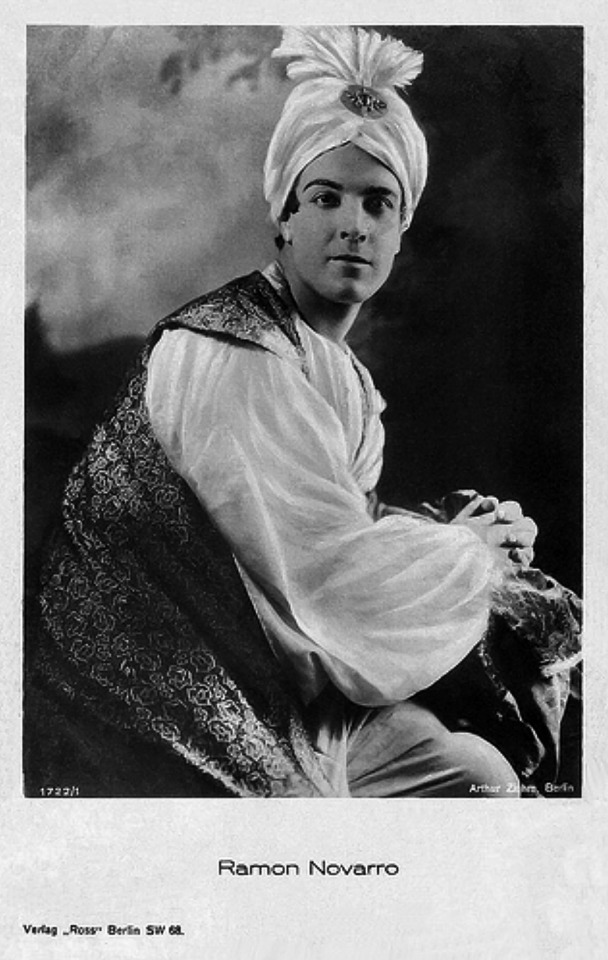
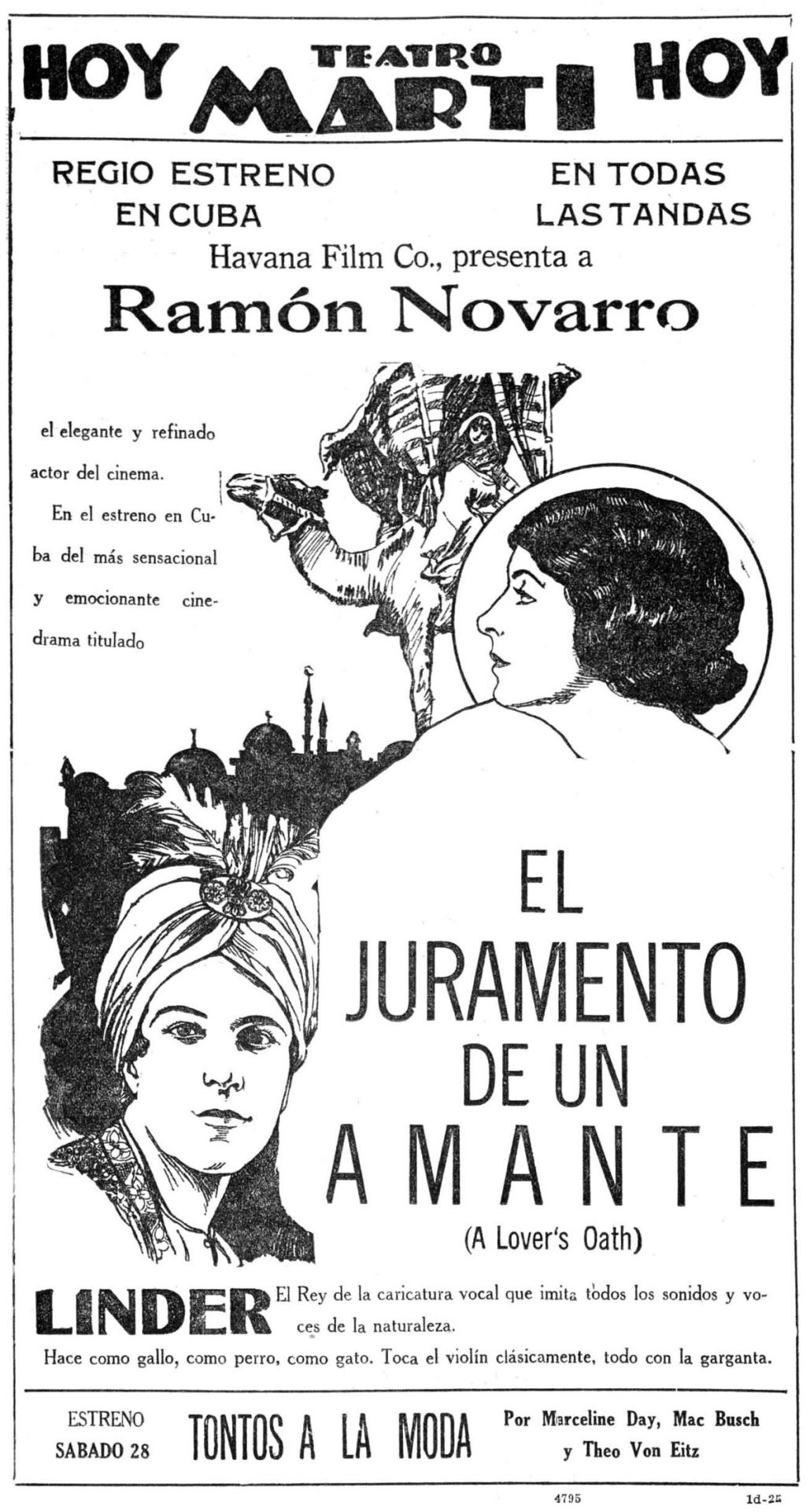
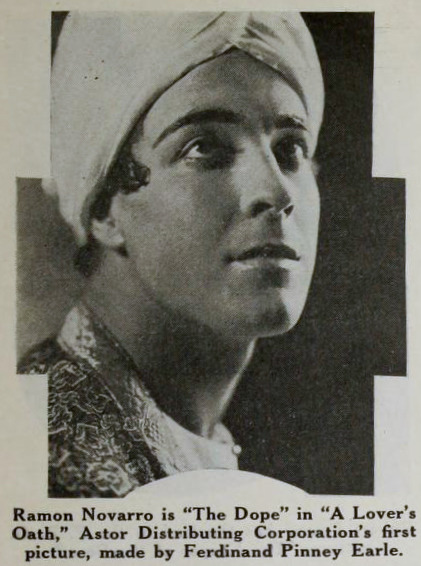
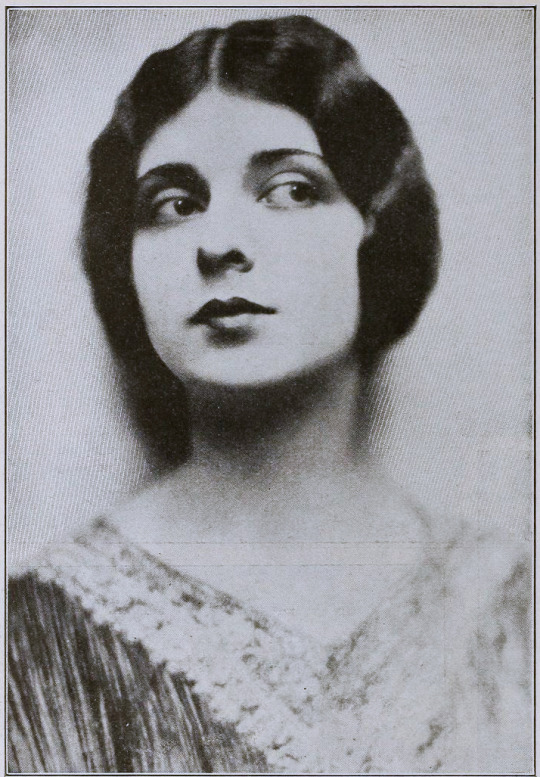

Finally I would like to highlight Ferdinand Earle’s statement to the industry, which he penned for from Camera in 14 January 1922, when his financial backers kidnapped his film to re-edit it on their terms:
MAGNA CHARTA
Until screen authors and producers obtain a charter specifying and guaranteeing their privileges and rights, the great slaughter of unprotected motion picture dramas will go merrily on.
Some of us who are half artists and half fighters and who are ready to expend ninety per cent of our energy in order to win the freedom to devote the remaining ten per cent to creative work on the screen, manage to bring to birth a piteous, half-starved art progeny.
The creative artist today labors without the stimulus of a public eager for his product, labors without the artistic momentum that fires the artist’s imagination and spurs his efforts as in any great art era.
Nowadays the taint of commercialism infects the seven arts, and the art pioneer meets with constant petty worries and handicaps.
Only once in a blue moon, in this matter-of-fact, dollar-wise age can the believer in better pictures hope to participate in a truely [sic] artistic treat.
In the seven years I have devoted to the screen, I have witnessed many splendid photodramas ruined by intruding upstarts and stubborn imbeciles. And I determined not to launch the production of my Opus No. 1 until I had adequately protected myself against all the usual evils of the way, especially as I was to make an entirely new type of picture.
In order that my film verison [sic] of the Rubaiyat of Omar Khayyam might be produced under ideal conditions and safeguarded from intolerable interferences and outside worries, I entered into a contract with the Rubaiyat, Inc., that made me not only president of the corporation and on the board of directors, but which set forth that I was to be author, production manager, director, cutter and film editor as well as art director, and that no charge could be made against the production without my written consent, and that my word was to be final on all matters of production. The late George Loane Tucker helped my attorney word the contract, which read like a splendid document.
Alas, I am now told that only by keeping title to a production until it is declared by yourself to be completed is it safe for a scenario writer, an actor or a director, who is supposedly making his own productions, to contract with a corporation; otherwise he is merely the servant of that corporation, subject at any moment to discharge, with the dubious redress of a suit for damages that can with difficulty be estimated and proven.
Can there be any hope of better pictures as long as contracts and copyrights are no protection against financial brigands and bullies?
We have scarcely emerged from barbarism, for contracts, solemnly drawn up between human beings, in which the purposes are set forth in the King’s plainest English, serve only as hurdles over which justice-mocking financiers and their nimble attorneys travel with impunity, riding rough shod over the author or artist who cannot support a legal army to defend his rights. The phrase is passed about that no contract is invioliable [sic]—and yet we think we have reached a state of civilization!
The suit begun by my attorneys in the federal courts to prevent the present hashed and incomplete version of my story from being released and exhibited, may be of interest to screen writers. For the whole struggle revolves not in the slightest degree around the sanctity of the contract, but centers around the federal copyright of my story which I never transferred in writing otherwise, and which is being brazenly ignored.
Imagine my production without pictorial titles: and imagine “The Rubaiyat” with a spoken title as follows, “That bird is getting to talk too much!”—beside some of the immortal quatrains of Fitzgerald!
One weapon, fortunately, remains for the militant art creator, when all is gone save his dignity and his sense of humor; and that is the rapier blade of ridicule, that can send lumbering to his retreat the most brutal and elephant-hided lord of finance.
How edifying—the tableau of the man of millions playing legal pranks upon men such as Charles Wakefield Cadman, Edward S. Curtis and myself and others who were associated in the bloody venture of picturizing the Rubaiyat! It has been gratifying to find the press of the whole country ready to champion the artist’s cause.
When the artist forges his plowshare into a sword, so to speak, he does not always put up a mean fight.
What publisher would dare to rewrite a sonnet of John Keats or alter one chord of a Chopin ballade?
Creative art of a high order will become possible on the screen only when the rights of established, independent screen producers, such as Rex Ingram and Maurice Tourneur, are no longer interferred with and their work no longer mutilated or changed or added to by vandal hands. And art dramas, conceived and executed by masters of screen craft, cannot be turned out like sausages made by factory hands. A flavor of individuality and distinction of style cannot be preserved in machine-made melodramas—a drama that is passed from hand to hand and concocted by patchworkers and tinkerers.
A thousand times no! For it will always be cousin to the sausage, and be like all other—sausages.
The scenes of a master’s drama may have a subtle pictorial continuity and a power of suggestion quite like a melody that is lost when just one note is changed. And the public is the only test of what is eternally true or false. What right have two or three people to deprive millions of art lovers of enjoying an artist’s creation as it emerged from his workshop?
“The Rubaiyat” was my first picture and produced in spite of continual and infernal interferences. It has taught me several sad lessons, which I have endeavored in the above paragraphs to pass on to some of my fellow sufferers. It is the hope that I am fighting, to a certain extent, their battle that has given me the courage to continue, and that has prompted me to write this article. May such hubbubs eventually teach or inforce a decent regard for the rights of authors and directors and tend to make the existence of screen artisans more secure and soothing to the nerves.
FERDINAND EARLE.
---
☕Appreciate my work? Buy me a coffee! ☕
Transcribed Sources & Annotations over on the WMM Blog!
See the Timeline for Ferdinand P. Earle's Rubaiyat Adaptation
#1920s#1923#1925#omar khayyam#ferdinand pinney earle#ramon novarro#independent film#american film#silent cinema#silent era#silent film#classic cinema#classic movies#classic film#film history#history#Charles Wakefield Cadman#cinematography#The Rubaiyat#cinema#film#lost film
49 notes
·
View notes
Text
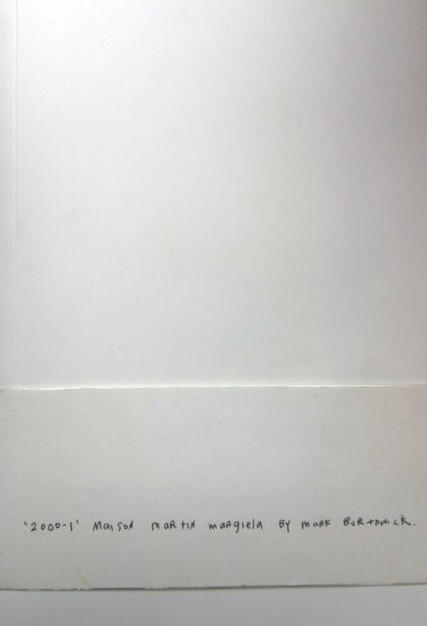


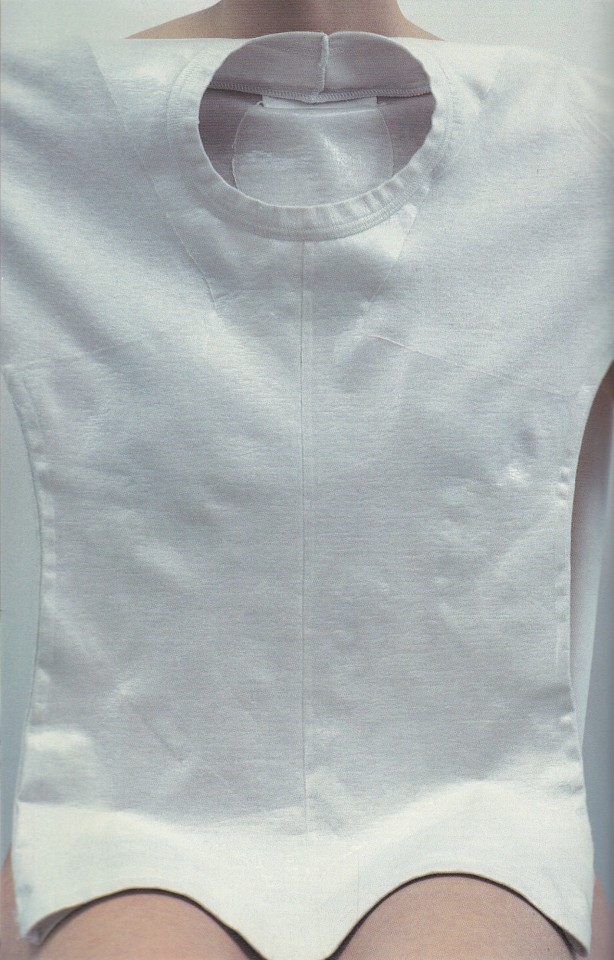

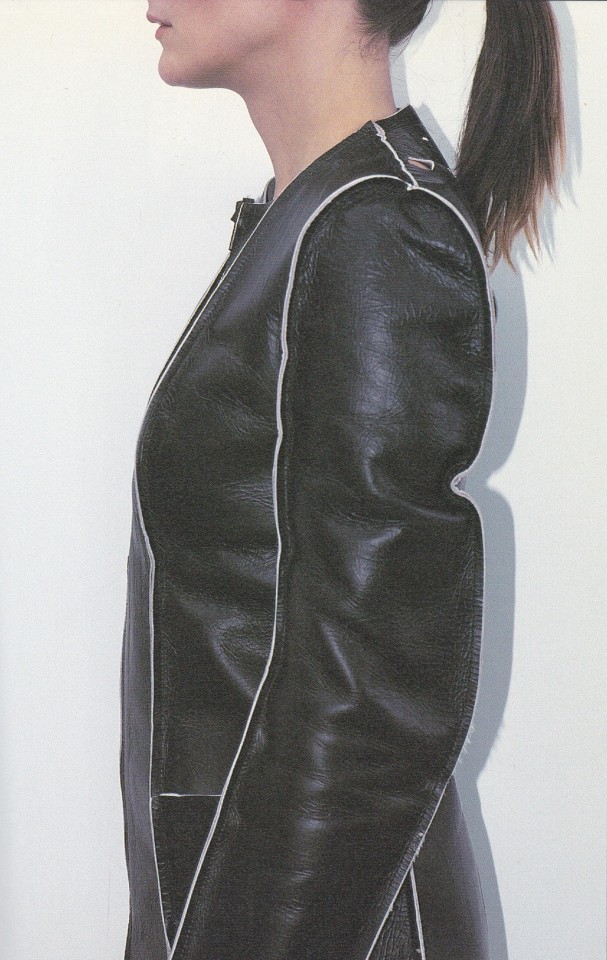
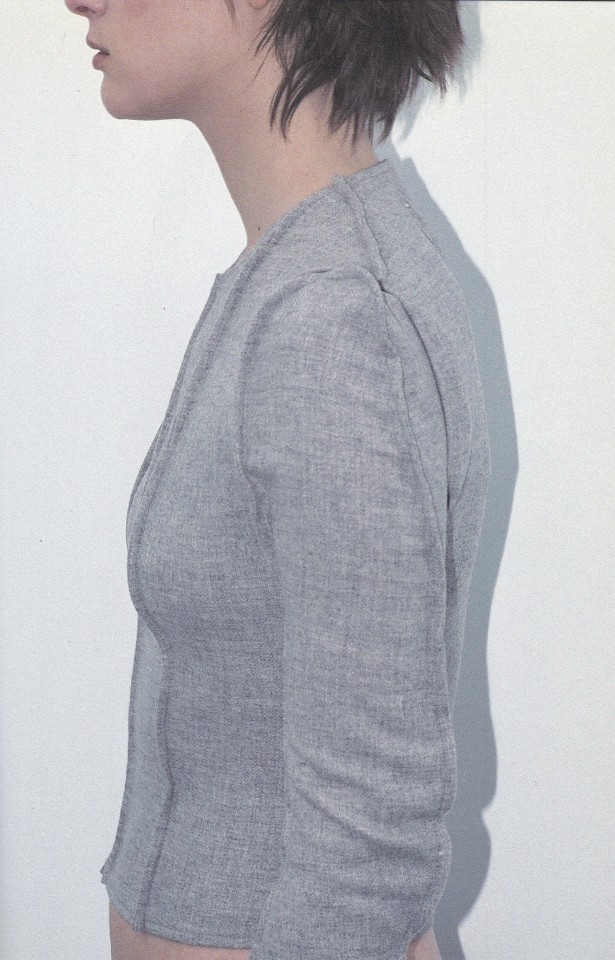
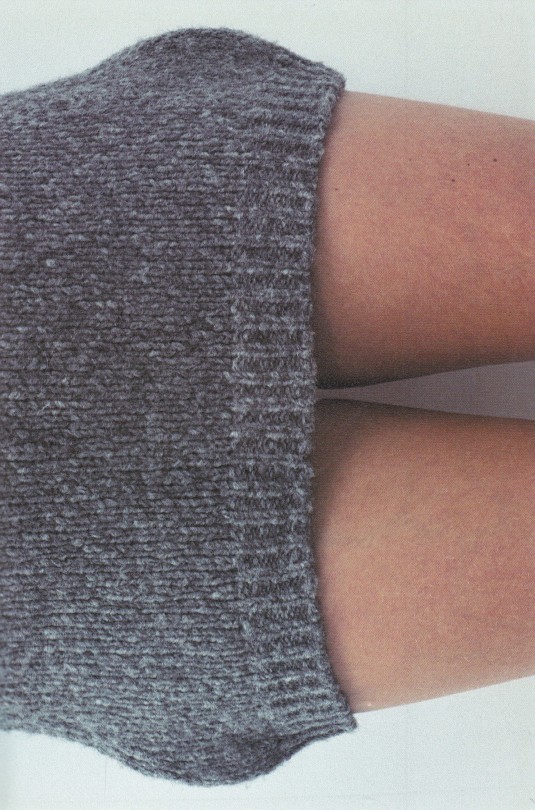
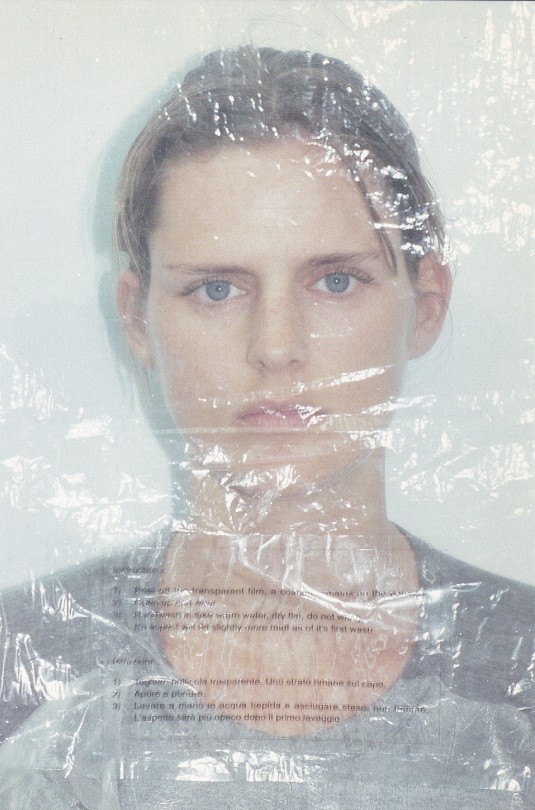
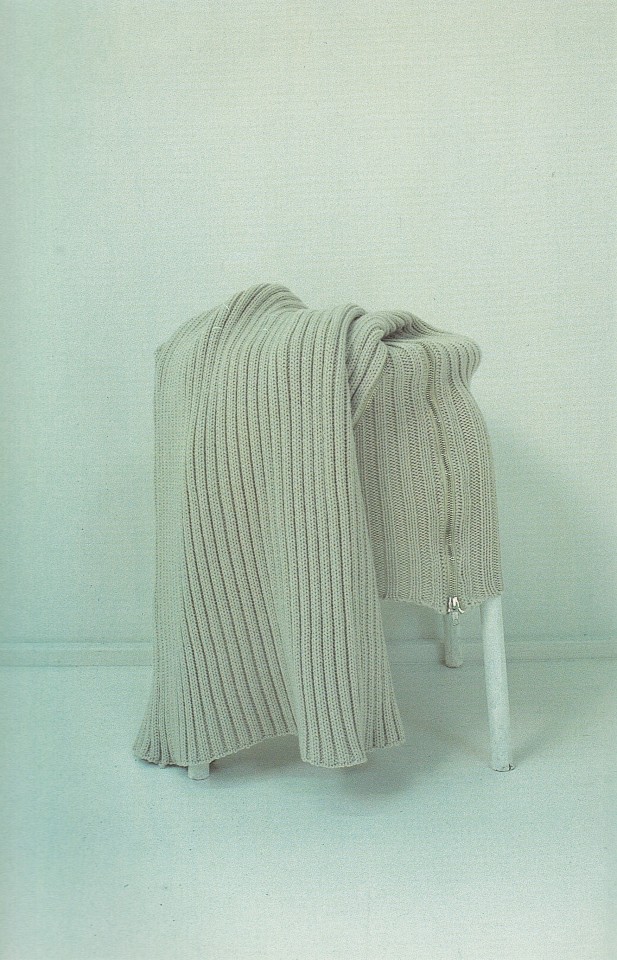

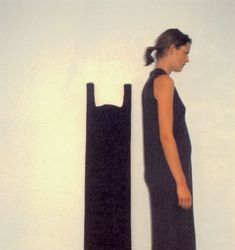
'2000-1' la maison martin margiela
collection martin margiela autumn winter 1998 1999
by mark borthwick
with thank to helen filliers yorinda gersina stella tennant
Grafiche Zanini, Bologna Septembre 1998, 110 pages, 16 x 24 cm, Softcover,ISBN 2-9512460-0-5
euro 220,00
email if you want to buy [email protected]
The presentation in Paris of Margiela's Autumn/Winter 1998/1999 collection featured collaborations with stylist Jane How, writer Sydney Rose, and Mark Borthwick who contributed a video featuring interactions between three women who are wearing items from the collection. This book contains photographs that were made during the production of the film.
Mark Borthwick has re-invigorated contemporary fashion photography, and successfully merged it with art, video and design. In this book, he has created a sparse and lyrically minimal document in which he freely interprets the Fall/Winter 1998/99 fashion collection of Martin Margiela -- whom Valerie Steele has called "one of the most important designers ever." Margiela's understated clothes are the perfect compliment to Borthwick's photographic sensibility, and this book represents yet another pioneering project for a photographer who has already worked with major designers, choreographers and magazines like I-D, Interview, Italian Vogue, and Purple Fashion.
24/05/23
orders to: [email protected]
ordini a: [email protected]
twitter: fashionbooksmilano
instagram: fashionbooksmilano, designbooksmilano tumblr: fashionbooksmilano, designbooksmilano
#Maison Martin Margiela#Mark Borthwick#fashion collection catalogue#Autumn Winyer 1998/99#very rare book#Jane How#Stella Tenant#fashion books#fashionbooksmilano
33 notes
·
View notes
Text
Thor: Love and Thunder
Thor: Love and Thunder is a 2022 American superhero film based on the Marvel Comics character Thor. Produced by Marvel Studios and distributed by Walt Disney Studios Motion Pictures, it is the sequel to Thor: Ragnarok (2017) and the 29th film in the Marvel Cinematic Universe (MCU). The film was directed by Taika Waititi, who wrote the screenplay with Jennifer Keiten Robinson, and stars Chris Hemsworth as Thor alongside Christian Bale, Tessa Thompson, Jamie Alexander, Waititi, Russell Crowe and Natalie Portman. In the film, Thor tries to find inner peace, but must return to action and recruit Valkyrie (Thompson), Korg (Waititi), and Jane Foster (Portman) — who is now the mighty Thor — to stop Gor the God Butcher (Bell). ) from eliminating all the gods.
Hemsworth and Waititi discussed plans for a Ragnarok sequel by January 2018. Love and Thunder was announced in July 2019, with Hemsworth, Waititi and Thompson all returning, as well as Portman who did not appear in Ragnarok. Waititi wanted to separate Love and Thunder from Ragnarok, creating a romance film and 1980s-inspired adventure. He adapted elements of Jason Aaron's run in the 2010s Thor comic books, which similarly debuted Gor and saw Foster take on Thor's mantle and powers while undergoing cancer treatment. In February 2020, Robinson joined to contribute to the script, and further casting was announced later that year, including an appearance in Guardians of the Galaxy. Production was expected to begin in late 2020 but was delayed by the COVID-19 pandemic. Filming finally began in January 2021 in Sydney, Australia with Barry Idoin as director of photography and finished in early June.
Thor: Love and Thunder premiered at the El Capitan Theater in Hollywood on June 23, 2022, in Los Angeles and was released in the United States on July 8 as part of the MCU's fourth season. The film received mixed reviews from critics, who praised the film for its light-heartedness, action sequences, and performances by Hemsworth, Bale, and Portman, but criticized the screenplay and tonal inconsistencies; Although its humor and visual impact were met with polarized reactions,[6] many critics considered the film inferior to Ragnarok. Love and Thunder grossed $760.9 million worldwide, making it the eighth-highest-grossing film of 2022.
#action adventure#marvel#movies#marvel series#action movies#hollywood#thor love and thunder#thor 4#thor 4 cast
2 notes
·
View notes
